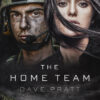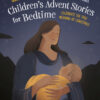Jan here, writing about nonfiction writing craft on this fine Friday in January of the new decade.
Let’s talk about the craft of storytelling in nonfiction. Fiction writers naturally spend much focused time developing the craft of story. Nonfiction writers quickly discover this is essential for their writing as well.
It is very possible that a section of story excerpted from its larger context could be told so well that a hearer or reader would need to guess if it’s nonfiction or fiction. Is it a true account told by a storyteller who has skillfully woven the facts through a creative use of fiction techniques? Or is it fiction written with such factual, researched detail that it seems real?
For this post, we’ll look specifically at the story crafted as nonfiction. What are some of the ways we can build stronger storytelling technique into our nonfiction—whether essay, article, or book?
The scaffolding of nonfiction storytelling must be research, facts, reality. That’s a given. But take the facts and blend those with scene considerations and plot and character development, and you’ve amped up the creativity and reader enjoyment several notches.
For an excellent example, read Same Kind of Different As Me, by Ron Hall and Denver Moore, with Lynn Vincent. Here’s a short excerpt written in the voice of Denver:
I caught a look at all three of them boys, and I remember thinkin none of em was much older’n me. But their eyes was flat and mean.
“We gon’ teach you a lesson about botherin white ladies,” said the one holdin the rope. That was the last thing them boys said to me.
I don’t like to talk much ‘bout what happened next, ‘cause I ain’t looking for no pity party. That’s just how things was in Louisiana in those days. Mississippi, too.
For the sake of space, this is a short excerpt, but what do you notice about the storytelling? Think about it before you read on.
The writers have chosen to tell the story in first person. That decision, for this book, works very well for helping the reader ‘be there’ in the story with the characters. Reasoning through the POV choice for our nonfiction storytelling is an important step and consideration.
We can ask: Which POV would best tell this story? How would each influence reader enjoyment and involvement?
This excerpt, from chapter one, is told by Denver. As a part of the story development, the writers consider his voice and character. The way he views the situation, the way he thinks, his actions and responses all tell us something about Denver. Throughout the book, scene choices, dialogue, setting, voice and language give us greater and greater insight into Denver and his story. (And Ron and the two of them together as you read on in the book.)
What you also likely noticed, or felt, was tension. Even in these few words, you can sense something is about to happen. Further, Denver’s emotions are subtly revealed—what he’s feeling about the boys and the situation when it’s about to happen, and how he feels about it after it happened.
The writers chose which details were most important to tell. It was more effective to show Denver’s reticence to tell what the boys did next.
Carefully chosen words, storytelling words, are powerful.
This is a short post on the topic—barely enough to do much but get us into trouble–but I’ll try to make up for it with a book recommendation.
For those who’d like to delve in more, pick up a copy of Elements of the Writing Craft, by Robert Olmstead. This is a book for both fiction and nonfiction writers. As a nonfiction writer, you can use the short lessons to practice, strengthen, and build your storytelling through character, setting, time, point of view, voice and language.
Let’s write stronger stories!
—–
Jan writes nonfiction from her home in the foothills of the California Sierras. She is currently working on more material for the teen/ya audience and for those who deeply care about them. She also enjoys life coaching and mentoring writers. Visit her site at www.jankern.com.



Renee Gray-Wilburn
January 11, 2010 - 13 : 07 : 12I consider myslef strictly a nonfiction writer, mostly just because I prefer to write reality. But I decided to join a fiction critique group awhile back to see how the “other half” lives. It was probably the single thing that helped me most with my nonfiction writing. I learned about story, creating characters, and using emotion to draw in your reader–all of which are essential to fiction and nonfiction alike. I recommend this for die-hard nonfiction writers. It’s really an eye-opener!